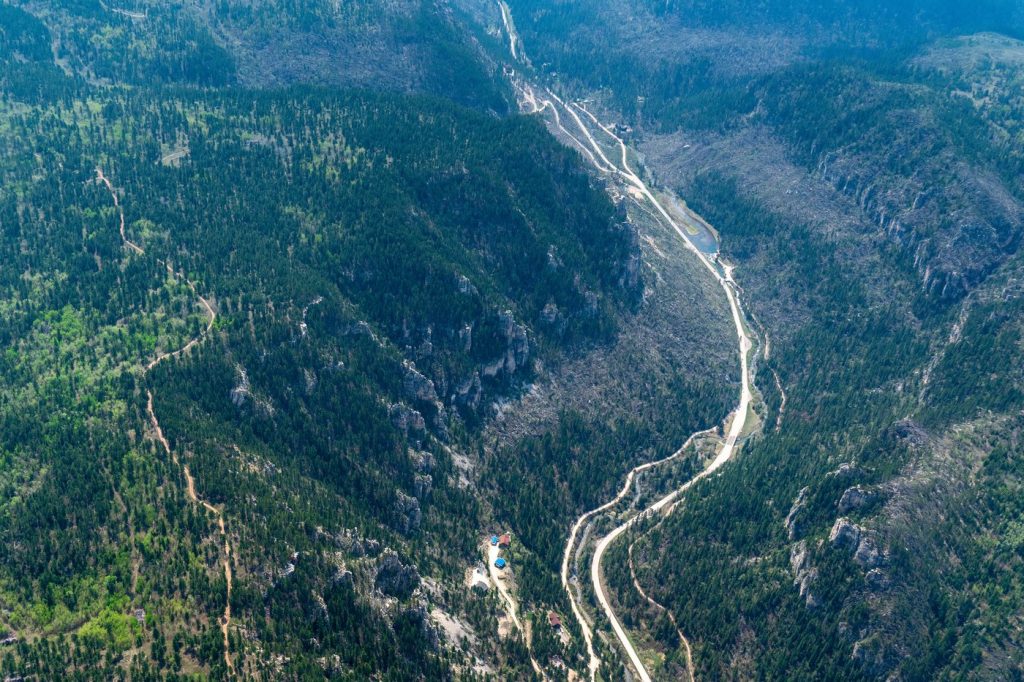SIOUX FALLS, S.D. (AP) – Approximately 150 years ago, a gold rush drew settlers to South Dakota’s Black Hills, leading to the displacement of Native Americans. Today, rising gold prices exceeding $3,000 an ounce have catalyzed a new wave of miners eager to tap into this cherished landscape, promising economic benefits but also instilling concerns about the potential long-lasting impacts of modern gold mining on the region.
Lilias Jarding, executive director of the Black Hills Clean Water Alliance, emphasized the apprehensions surrounding mining activities, stating, “These impacts can be long term and make it so that tourism and outdoor recreation is negatively impacted. Our enjoyment of the Black Hills as a peaceful place, a sacred place, is disturbed.” The Black Hills span over 1.2 million acres (485,622 hectares) from the Great Plains in southwest South Dakota extending into Wyoming and are deemed sacred land by the Lakota Sioux people. This region also attracts millions of tourists who visit landmarks such as Mount Rushmore and various state parks.
Modern mining techniques have dramatically changed the landscape compared to the days when prospectors would pan for gold. Current operations typically rely on large trucks and heavy machinery, creating deep, multi-tiered pits and employing hazardous chemicals, like cyanide, to extract gold. As a result, the land loses its original form. The Homestake mine, previously the largest and deepest gold mine in the Western Hemisphere, now stands barren in Lead, South Dakota, repurposed for scientific research.
The surge in interest for Black Hills gold mining parallels the increased price of gold. In 2002, when the Homestake mine closed, gold was priced at approximately $300 an ounce; today, it is about ten times that value. Joseph Cavatoni, a senior market strategist at the World Gold Council, notes that such price spikes are attributed to global economic uncertainties. “Gold tends to be a stable asset,” he remarked, highlighting its performance during inflationary and recessionary periods, making it an attractive investment.
Furthermore, President Donald Trump has spurred the mining industry by signing an executive order in March, aimed at enhancing American mineral production through expedited permitting and regulatory reviews. Colin Paterson, a professor emeritus of geological engineering at the South Dakota School of Mines and Technology, detailed the extraction process of the gold, which involves crushing the encased rock and using chemicals to dissolve the gold.
Coeur Mining operates the only active mine in the Black Hills, while Dakota Gold plans to establish an open pit mine by 2029 and is also exploring opportunities near the old Homestake site for an underground mine. Jack Henris, president and chief operating officer of Dakota Gold, has estimated that the open pit mine could generate up to 250 jobs and contribute approximately $400 million in taxes to the state throughout its operational life. Henris accentuates that many employees are local, expressing a shared love for the Hills.
The historical roots of gold mining are significant in shaping the contemporary Black Hills region. The U.S. government signed a treaty in 1868 that recognized the Sioux Nation’s ownership of the Black Hills, though the land was seized following the discovery of gold, permitting settlers into the area. The U.S. Supreme Court later ruled that the Sioux are entitled to compensation, but they have not accepted it and maintain their claim to the land.
Most tribes have opposed mining activities in the Black Hills. Taylor Gunhammer, a local organizer with the Indigenous advocacy group NDN Collective and an Oglala Sioux, asserted, “There’s a central truth about mining in the Black Hills in that it was never the most mineral-rich place there ever was.” Gunhammer stressed that it isn't the mineral content that attracts mining companies, but the leniency of the regulatory environment overseen by local authorities. Some proposed projects, such as Dakota Gold's mine, are situated on private land and thus are only subject to state regulations, as opposed to the federal regulations imposed by the U.S. Forest Service for public lands.
Environmental activists have raised concerns about the potential for chemical leaks, citing nearly 200 spills at Coeur’s Wharf mine and the contamination-related closure of the former Homestake mine. Coeur’s environmental manager, Jasmine McCauley, stated that each incident was thoroughly investigated and addressed with remedial measures to mitigate future occurrences.
Jarding from the Black Hills Clean Water Alliance expressed ongoing concerns regarding the boom in mining activity. “It’s really important that people understand the exponential growth in mining activity that’s been happening in the Black Hills over the last five years or so. There are currently active mining claims on 271,000 acres in the Black Hills. That’s 20% of the whole Black Hills that is potentially going to be subject to mining,” she concluded.










